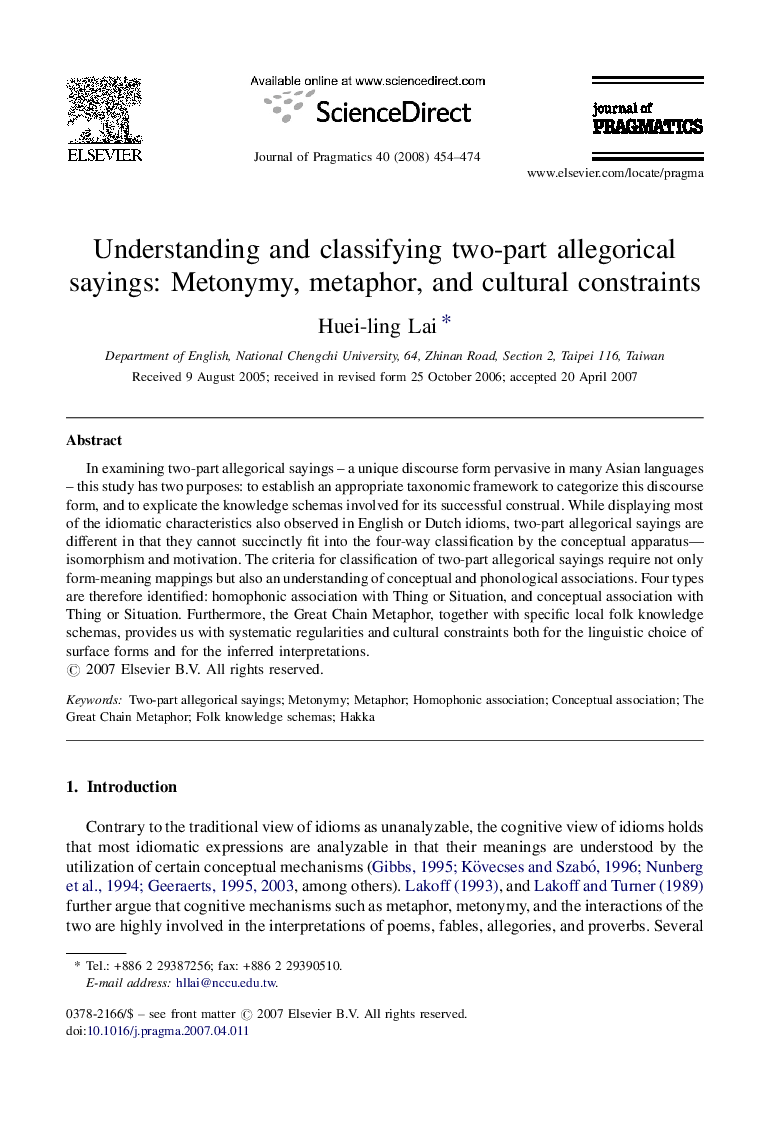| Article ID | Journal | Published Year | Pages | File Type |
|---|---|---|---|---|
| 934070 | Journal of Pragmatics | 2008 | 21 Pages |
In examining two-part allegorical sayings – a unique discourse form pervasive in many Asian languages – this study has two purposes: to establish an appropriate taxonomic framework to categorize this discourse form, and to explicate the knowledge schemas involved for its successful construal. While displaying most of the idiomatic characteristics also observed in English or Dutch idioms, two-part allegorical sayings are different in that they cannot succinctly fit into the four-way classification by the conceptual apparatus—isomorphism and motivation. The criteria for classification of two-part allegorical sayings require not only form-meaning mappings but also an understanding of conceptual and phonological associations. Four types are therefore identified: homophonic association with Thing or Situation, and conceptual association with Thing or Situation. Furthermore, the Great Chain Metaphor, together with specific local folk knowledge schemas, provides us with systematic regularities and cultural constraints both for the linguistic choice of surface forms and for the inferred interpretations.
